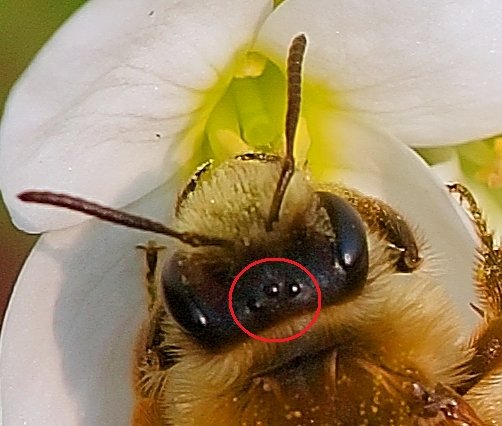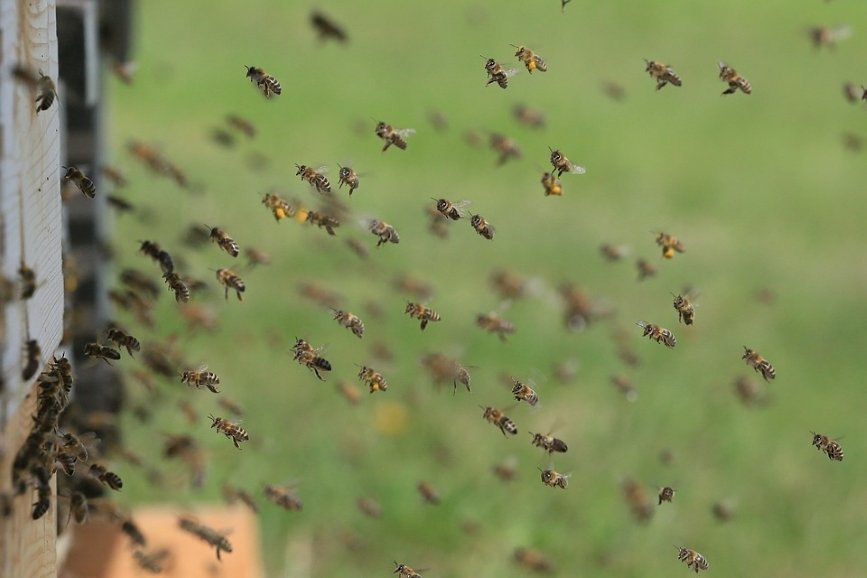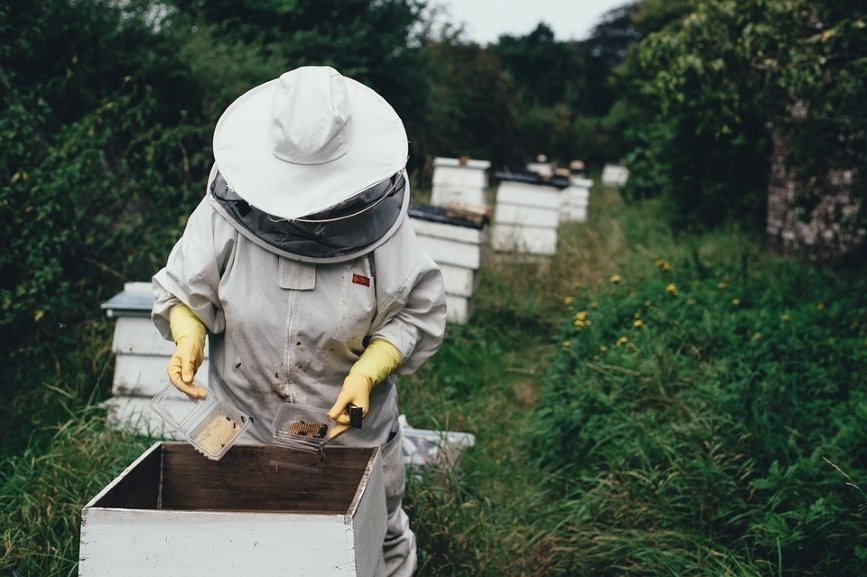
Honey Bee Fact
Did you know?
Bees have five eyes! Two eyes are compound and the other three are tiny ocelli eyes. An ocelli eye has a single lens and several sensory cells. It is used mostly to movement. These ocelli eyes can be found right on the top of the bee's head. Below you can see a close up picture of them.


Honey Bee Story
I think the first question everyone asks me when I tell them I keep bees is, "Do you get stung often?"
Tough question. Often is relative. For most people, if they got stung once a decade, that would be considered often. For me, since I handle bees quite frequently, I consider going a year without being stung as quite a long time.
For the most part, the bees are mellow and not aggressive. From time to time, I upset them and will get stung. Bees don't like loud banging on their hives, fast movement, or dark clothes. Scientists have surmised these all alert them to some type of attack. Imagine a big, brown bear reaching in a hive to get honey. He bangs the hive, moves fast, and has a dark coat of fur. For these reasons, I try to minimize this behavior.
Once, about a year after I started keeping bees, my son had a few of his friends over to swim and play in the yard. One of the friends was fascinated by the bees. He kept going over and looking at them. All good.
But then, like some boys of an age, he started poking inside the hive with a stick. I warned him twice. "Don't do that, the bees will get really mad if you do that."
He ignored me.

Until suddenly, a bunch of bees started coming out of the hive, began to bump into him, and were buzzing loudly. Luckily, no one was stung that day. But the boy in question has never once bothered the hive again.
As an adult, you aren't supposed to say such things as, "I told you so," to a neighbor's child. I refrained from saying it, but I definitely thought it a few times.

Beekeeping Lesson 10
The honey bee is a docile creature. They don't actually want to sting and only do so to protect the colony and if seriously threatened outside the hive. There are certain behaviors which will alert a wise beekeeper to a colony preparing to defend themselves.
When the bee colony first begins to defend the hive, several dozen bees will fly out of the hive moving fast. These bees look for dark colors and movement. When they find it, they begin to bump into the object of their ire. This bumping behavior is a first warning.
If the object of their anger doesn't move, the bees will begin to sting it. As they sting the "attacker" a pheromone is released and more bees are attracted to the defense.
As a beekeeper, what is the best way to work with an angry hive? The quick answer is don't. If your hive is distressed, it is best to leave it alone. If you must work with the hive for some reason, use lots of smoke to cover the smell of the pheromone and work with slow, calm movements. This will do wonders to help calm the colony.

The good thing about keeping bees is you can prepare for stings by wearing proper protective clothing. Dressed appropriately, you probably won't be stung at all.

**Images used are labeled for free reuse from Pixabay
**Many of the ideas are taken from my book The Beekeeper's Guide: Fun and Simple Steps to Apiary Success and Self Sufficiency

Happy Beekeeping!
Follow @bigpanda for more beekeeping hints and tips.

